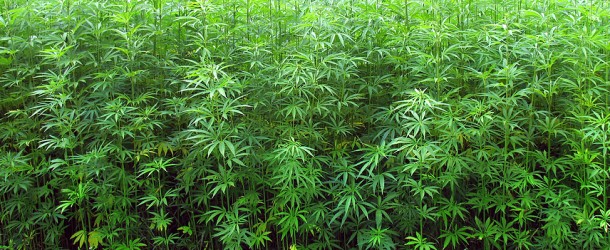Understanding Cannabis landraces as well as their genetic history and potential is an important step in choosing the correct strains for your garden.
A landrace can be defined as a wild growing cannabis strain or sub-species that evolved in the isolation of a specific geographic region. Over time, isolated strains began to take on their own distinct traits best suited for survival in the region in which they evolved. Though specimens of landraces have moved about to a minor degree following the movement of peoples due to war and trade, major hybridization did not begin until quite recently. Marijuana strains as we know them today are not only the result of natural evolution but mostly due to careful cross-breeding and hybridization of these distinct landraces, largely accomplished by amateurs.
While industrial hemp strains and marijuana differ as much as Mastiffs and Chihuahuas, there is very little botanical distinction between the two. It may even surprise some to learn that in the United States, Cannabis sativa L. was grown as late as World War II for industrial fiber production. Though there is no true distinction between marijuana and hemp, one could say that there is an imaginary line measured in THC content which, after being crossed, identifies one from the other.
Cannabis sativa
Cannabis sativa landraces originated in Asia, Asia Minor and Northern Africa but were introduced into the west early on. Sativa landraces were later introduced to the Americas and tend to thrive throughout South America, Mexico and to a lesser degree the southern United States.
These landraces tend to be taller than their counterparts, with greater internodal lengths. Having adapted to life near the equator, sativa landraces are unable to mature properly at even mild northern or southern latitudes. Some famous sativa strain names include; Acapulco Gold, Panama Red, and Thai Stick.
- Suited for equatorial and tropical areas with longer summers and more intense sunlight
- Tall, up to 20 feet with large internodal lengths
- Slender leaflets with deep jagged serrations
- Longer flower maturation
- Flowers develop in longer, often airy, clustersÂ
- Often described as having fruity and floral aromas
Cannabis Indica
We can trace the roots of this noble landrace back to the mountains of Afghanistan, Pakistan, and India. It is unclear who first imported these landraces to the West, but many Indica landraces must have made it back to Europe from the British colonies in India, Pakistan and Afghanistan in the 1800’s. It wasn’t until 1979, when soldiers began returning home from conflict in occupied Afghanistan, that fresh indica landraces began flowing steadily into Europe and the West. From there, growers began breeding indica with sativa to produce many of the wonderful hybrids we know today.
Indica landraces finish quite early and are well adapted to growing in mild northern latitudes. These plants can be characterized as being shorter, more compact and more resinous than their sativa cousins. Indica dominant strains are numerous, but it seems the current favorites are those whose names contain the word ‘Kush’ (from the Hindu Kush region). Other perennial favorites include Northern Lights, Blueberry, and oodles of other noteworthies.
- Native to temperate climates
- Grows 4-6 feet tall, with short internodal length
- Wide leaflets, serrations may resemble stair steps
- Shorter flower maturation
- Flowers are very dense, forming tight bud clustersÂ
- Flowers often take on musky or skunky aromas
Cannabis Ruderalis
Hailing from Eastern Europe, the Himalayas and Siberia, ruderalis is the cannabis oddball. Often growing only a few feet tall, this wandering weedy landrace is not only the smallest in the marijuana family but, without exception, the best adapted to harsh northern climates. Bringing little in the way of potency to the genetics table, ruderalis has found its own niche with breeders.
Unlike sativa or indica that require a shortening of days (photo period) to trigger a flower response, ruderalis’ flowering schedule is based on the plant’s age. This adaptation is necessary for survival at extreme northern or southern latitudes where summer days can be as long as 20 hours. Breeders have cleverly used this trait, called “auto flowering†to produce some of the fastest finishing marijuana strains. It should be noted that these strains can’t be maintained in a vegetative state or replicated by cloning, as they will flower and complete their life cycle even exposed to continuous direct light. Noteworthy ruderalis dominant hybrid strains include; Gorilla Gold, Lowryder 1 and 2, and just about any strain that’s name contains the word “autoâ€.
- Native to northern climates
- Short 2-3 feet in height, often weedy or wandering branch structure
- Leaflets often short with length being near equal
- Auto flowering
- Low in psychotropic chemicals, low potency
Understanding Cannabis Landraces,













Looks like a nice plant to add to a garden. The only problem is I don’t smoke and the plants would be smoked away by others outside my home.
Thanks for all the valuable info! I am presently vegging 37 plants from seed. Its the 3rd grow for me. During my hours of research I have learned about the value of starting with good genetics. EVERY website on the subject agrees on this point and I believe it. The problem is, where can I get good seed to start with in the USA? I am not fortunate enough to live in a 420 friendly state. In addition, I don’t envision any success sending cash in an envelope to a PO box in Europe and expecting something in return. Any advice?
There are good reliable seed banks in Europe but do your research. Of course having seeds shipped here is illegal but then so it growing pot in a non 420 friendly state. Consider having them shipped to an address that does not have a grow. You could also hop in the car and take a mini vacation to Washington or Colorado or California where it shouldn’t be to hard to find some good seeds or clones.